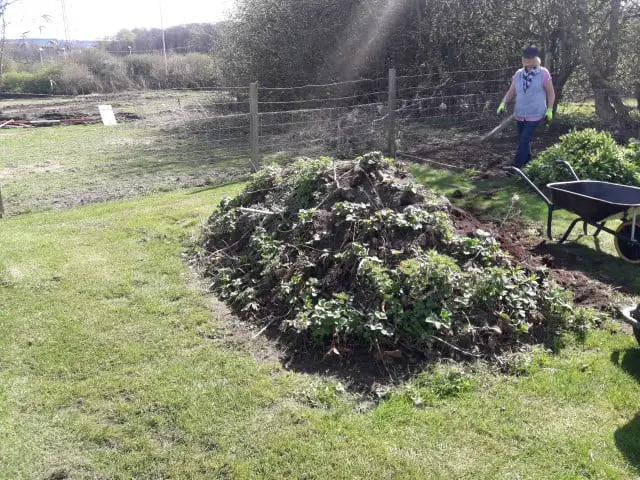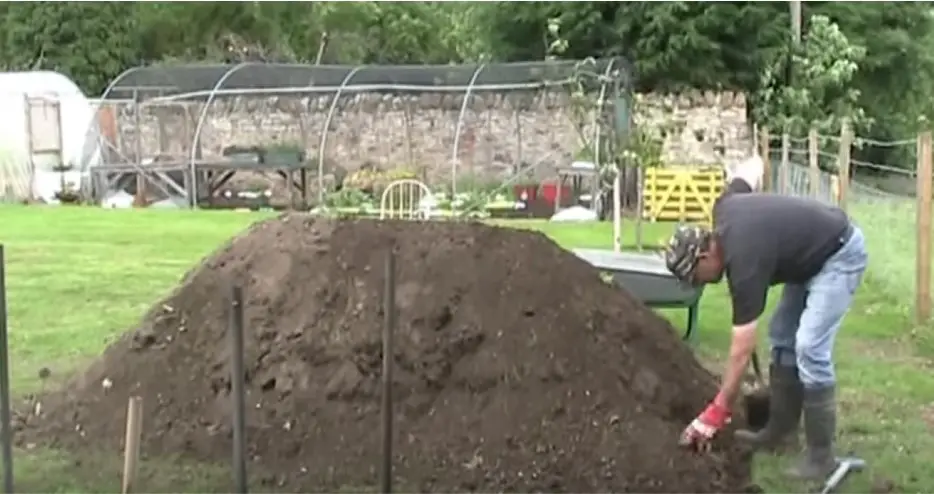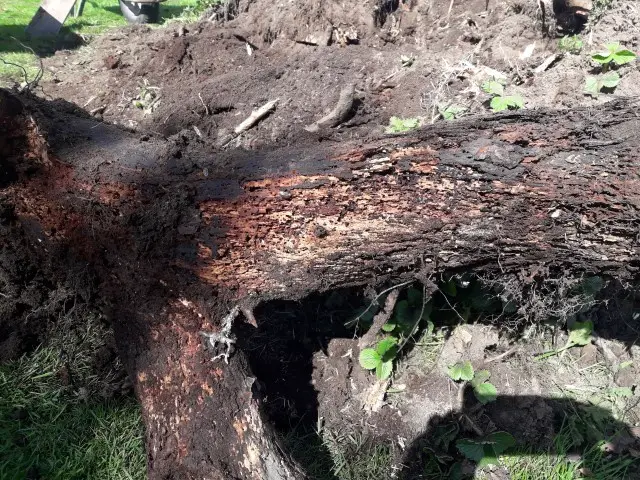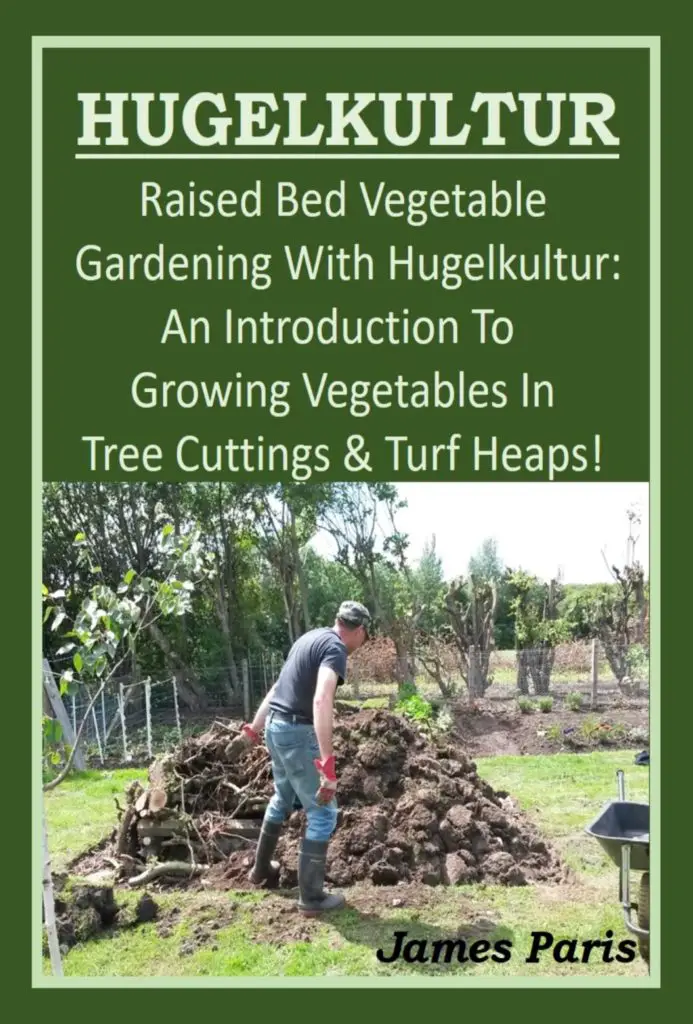
What Is A Hugelkultur?
A Hugelkultur (pronounced hoo-gel-kool-toor) is simply a growing mound that has been made up from old timber scraps, fallen forest debris, grass cuttings, and topped off with enough topsoil to grow vegetables – or in this case – strawberries.
The Hugelbed – as it is also known – is an ancient idea from the Black forest region of Germany, where wood was plentiful in the form of forest cuttings and other debris – but good growing soil for vegetables was scarce.
of Germany, where wood was plentiful in the form of forest cuttings and other debris – but good growing soil for vegetables was scarce.
The Hugel-bed, like so many good ideas was born out of necessity and developed to create the ideal conditions for growing plants where the soil and climate would make it difficult to grow in the traditional manner.
Check out out Hugelkultur guide on Amazon!
on Amazon!
How Do You Make A Hugelkultur Garden
There are at least a couple of different ways to go about making a Hugelbed, both of which produce good results. Option 1 is the …
- Raised Bed Hugelkultur. Make a raised bed frame about 24-30 inches deep. As long as you like, but about 6-9 foot wide. Fill the bottom two thirds with old timber with the heaviest branches at the bottom and grading upwards to thinner sticks.
- Fill the last section to the top with a selection of grass and other ‘green material’ like vegetable cuttings, weeds & stinging nettles if you have them (without the roots).
- Top this up with a compost/topsoil mix to form a mound in the center about 12-24 inches higher than the sides. An slope of about 40-45 degrees will suit most situations and veggies. Any steeper than this and you will lose a lot of your topsoil through gravity and erosion.
Option 2 is the traditional Hugelbed form which you will see in the picture below.

- Traditional Hugelkultur: If building on a grass area then turf out an area as long as you wish and about 9 foot wide. Lay the turf to one side.
- Get a collection of old timbers keeping the heaviest timber logs to the bottom and gradually piling the wood with the thinner branches and twigs to the topmost part.
- Build this at least 3 foot high before filling in the gaps with smaller debris such as leaves, grass cuttings and other ‘green’ organic material.
- Once this is filled in then take the turf you removed at the beginning and place it on the mound grassy side down (upside down).
- Cover the whole lot over with at least 3-4 inches of soil/compost mix. This will give the veggies a good start until the mound starts composting properly.
If you have access to lots of cardboard or newspapers, then you can place them on the bottom as it helps restrict weeds and encourages worms – these masters of compost making!
When Is The Best Time To Build A Hugelkultur

Without a doubt, the best time to start constructing your Hugel bed is in the Autumn fall or early winter. There are 2 reasons for this.
First reason is that there is much more material available as the fall produces lots of fallen leaves and the storms break of old branches and twigs – ideal material for your hugelkultur.
The second reason is that by constructing your bed in the Fall you give it time to settle down, and for the composting process to begin.
A hugelkultur actually takes around 2 years to start operating properly. For this reason you need plenty of nutrients to begin with otherwise your plants will not prosper at all until the bed operates as it should.
How Long Will A Hugelkultur Last?
Provided you have used a good base of materials in the form of large logs or broken trees, a Hugelkultur will last for 10 years or more.
True, it will settle down a little over the years, however as the timbers fully rot down and the composting process gets well underway, this will be a nutrient-rich growing area for many years.
Self Irrigating. An added bonus of the Hugelkultur is the fact that it becomes almost totally self-irrigating after 2-3 years.
This is because the heavy trees become like sponges both in texture and looks as the micro-organisms and fungi’s break them down
The picture below gives an example of this as I broke down a 3 year old Hugelkulture (unfortunately I needed the space for another project) and exposed the heavy trees at the bottom of the pile.
The 10 inch trunks were absolutely soaking and totally sponge-like, having absorbed and retained lots of water, ready to leach it back into the growing area as it needed it.

Growing Strawberries In A Hugelbed
For the strawberries themselves I chose an everbearing strawberry plant called the Ozark Beauty. This produces large sweet strawberries throughout the growing season, and will last for about three years before you have to remove them.
Of course as is the nature of strawberry growing, you have let the runners establish themselves along the way so that you never in fact run out of strawberry plants as you remove the old ones.
Positioning Your Hugelkultur for strawberries is a simple matter of running your bed in a line between the sun rise and fall. In other words pointing North to South. This way your strawberries will get the early and late sunshine on the broad side of the Hugelbed.
Advantages of Growing Strawberries On A Hugelbed
This way of growing strawberries means that they are easy to harvest. No crawling around on your hands and knees or stepping on the strawberries you cannot see.
The mound is well drained so the fruits are not laying in a boggy mess on the ground where they are likely to rot before you can pick them.
Slightly less prone to slug predation as the slugs like a boggy mess to move in!
One of the disadvantages of the Hugelkultur in general is the fact that it can attract mice and voles – who do love strawberries like everyone else!
If this is a problem for your area then set up a few mouse traps around your Hugelbed – I’ll leave it up to you whether you decide to catch them alive or otherwise!


